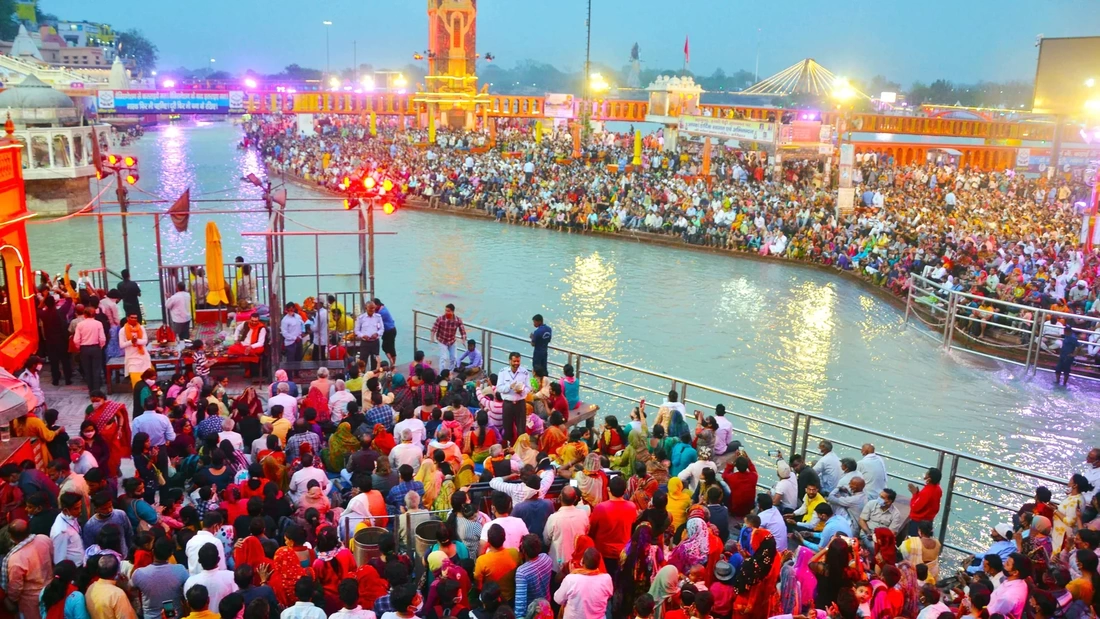|
By: J. Pastore One of the largest known celebrations in the world, the Indian festival of Kumbh Mela is scheduled to recommence in 2025. The festival takes place every 12 years, yet 4 individual festivals occur throughout those 12 years. In 2019, the festival attracted over 200 million people from all Hindu religious sectors, hosting around 50 million people in just one day (its most auspicious day, however). The four festivals occurring in the 12 years all happen in symbolic pilgrimage sites spread around India, specifically on four sacred rivers: Haridwar in the Ganges River, Ujjain on the Shipra, Nashik on the Godavari and at Prayag between the Ganges and River Sarasvati (mythical).
Each location is specific in its significance, following the astrological positions of the Sun, Jupiter and the moon. The date of the festivals is determined specifically when Jupiter is aligned with the Taurus Zodiac and when the sun and the moon are in Capricorn. In Prayag specifically, better known as the Allahabad Kumbh Mela, is where the largest festival is set – every 144 years or so, they host the largest Kumbh Mela, the last being in 2001. The oldest Kumbh Mela may be the Magh Mela, dating back to the early centuries CE, influencing the events of the Allahabad and the Haridwar Kumbh Mela. It was believed that the Indian god Vishnu poured a drop of the immortality nectar using a pot (The Kumbha of Amrita) in each of these distinct areas after a mythological fight between the gods, thus becoming sacred regions for where the Kumbh Mela is set. As a result, millions gather inside the rivers to bathe in what is referred to as the “primordial nectar” of immortality, lathering themselves in the essence of purity and infinite life and liberating them from “the cycle of birth and death” – UNESCO. However, before an order was established by the Indian government stating that the festival was only to be used for baths, the Kumbh Mela hosted bloody disputes between religious groups for power acquisition. As aforementioned, people from all religious sectors of Hinduism come to celebrate Kumbh Mela. People such as the sadhus are holy men who do not dress and maintain nude all year round or practice extremist physical disciplines in preparations for the festival. Hermits, another religious Hindu group which attends, remain in isolation all year round, only choosing to go out during the four sacred events. The Naga Akhadas are militant ascetic orders whose members, formerly positioned as soldiers or traders, represent extreme holy positions in each Kumbh Mela festival. Mainly Akhadas and Ashrams attend the festival, making up the largest group of religious organizations participating. The festival encapsulates all elements concerning astronomy, spirituality, science and astrology. The experience is hugely enriching and important for Indian culture. The main events occurring during the festivals range from oral traditions and transcripts of ancient religious manuscripts, historical travelogues and strengthening the relationship between the Sadhus and the Akhadas – the most crucial method of safeguarding ancient knowledge of the Kumbh Mela. In December 2017, UNESCO declared the Kumbh festival to be an “intangible cultural heritage of humanity.”
0 Comments
Leave a Reply. |
Categories
All
Archives
June 2024
|

